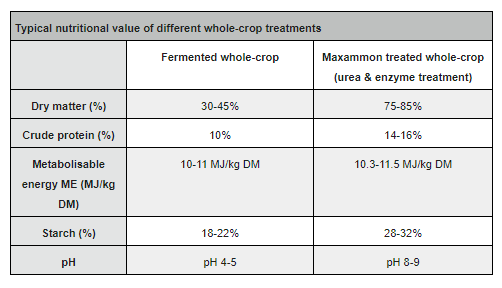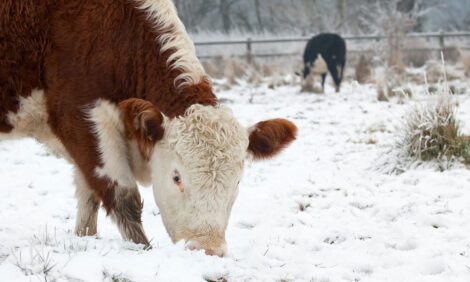



UK farmers should consider whole-crop options to extend forage stocks
Cattle farmers who are facing the prospect of a forage shortage this season could consider whole-cropping cereals to help bridge the feed gap.With a lack of rain resulting in low yielding first and second cut silages - and the potential for a summer drought - cereal crops could prove a lifeline for some producers.
The first step is to establish the state of play on individual farms and work out if you need to extend forage stocks, says Mole Valley Farmers Senior Nutritionist, Dr Robin Hawkey.
“Mid to end of June is a great time to do a forage audit as most farmers have got second cut in and maize crops will have been drilled, allowing potential silage stocks to be calculated,” he says. “Look at your stocks and work out if you have enough for the winter. If you are looking tight - and you have cereals available - think about how you could utilise them to extend supplies.”
Cereals are hugely flexible as they can be used for fermented whole-crop or as urea treated whole-crop, depending on when the crop is ready and individual farm requirements.
Fermented whole-crop is harvested when the crop is still green and the grain is “cheesy/soft cheddar” at around 35-45 percent dry matter. In the South West, this is likely to be around the start of July. The crop is then ensiled like grass or maize silage. Good consolidation, combined with the use of quality silage sheets and cling films and a proven additive, such as EcoCool, is vital to ensure effective fermentation at high dry matters.
Alternatively, the crop can be taken later when it is mature at around 75-85 percent dry matter. Maxammon - a urea enzyme treatment - can then be layered through the clamp prior to sealing. This produces ammonia gas, which preserves the crop and creates a stable feed within two weeks. Unlike fermented whole-crop there are no fermentation losses.
“As it’s cut later, the Maxammon treated crop is higher in starch,” explains Dr Hawkey. “At the same time, the treatment creates a more alkaline, rumen friendly feed. Depending on the rate applied, the urea enzyme treatment also raises protein levels by about 4 percent, which could be attractive considering indications that first cut grass silage could be low in protein. The alkaline process also improves the digestibility of the crop. ”



